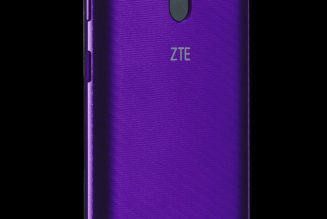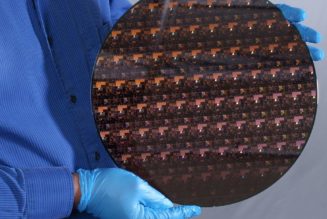Sony released its first PS5 software beta last Thursday, and with it came the much-anticipated support for adding an M.2 SSD, letting you install more PS5 games than the fairly restrictive 825GB built-in SSD allows. Alongside the beta, Sony provided a list of requirements, making it clear that you wouldn’t necessarily be able to just grab any SSD and chuck it in your PS5.
Sony’s main requirements are that the SSD be PCIe Gen4 and at least 250GB. However, Sony makes it very clear that your SSD needs a heatsink, which can complicate things, given the limited amount of space in the PS5’s SSD bay. What SSDs you’ll want to consider depends on whether you want to install a heatsink yourself or not, and whether you’re a “play by the rules” type or a “let’s see what I can get away with” type.
I don’t want any hassle — I want to buy an SSD I know will work, install it, and never think about it again.
WD told us that, based on Sony’s requirements, its WD Black SN850 drives (available in 500GB, 1TB, and 2TB capacities) would work, and that it was in the process of testing compatibility. The drive easily surpasses Sony’s speed recommendations, but you’ll want to make sure you’re buying the version with a heatsink — for the 1TB model, the heatsink version costs $20 more than the non-heatsink version and has a big orange line on the front. It’s also the SSD that the PS5’s lead system architect bought for himself.
Seagate says its upcoming Firecuda 530 drives, which have the option for an included heatsink, will work in the PS5 as well. When they release at the end of August, it’ll be $160 for a 500GB model, $260 for a 1TB model, and $540 for a 2TB model. You can tell the heatsink models by the orange vertical stripe near the connector.
A helpful guide to installing an SSD in a PS5.
I’m willing to put in some work and / or roll the dice a little.
For an SSD that meets the speed requirements, Crucial told us its newly announced P5 Plus SSD is compatible with the PS5, but you’ll need to install your own heatsink.
Heatsinks should be low profile — for the ones that are just going over the top of the SSD, Sony wants you to add no more than 8mm of height, including the heatsink and thermal interface. Because of that, low-profile heatsinks like the ones below are going to be the way to go.
If you’re looking to go all-out on speed but are still okay with installing a heatsink, Samsung’s blazingly fast 980 Pro is another option.
If you’re looking at the 980 Pro, this heatsink from EK Water Blocks is compatible with single-sided SSDs. It also fits within Sony’s height requirements (and looks pretty, though it’ll be buried in your PS5).
If you’re willing to stick to 1TB of storage, Sabrent’s Rocket 4 Plus is another option. It does come in 2TB and 4TB capacities, but those seem to be double-sided, meaning that heatsinks for them are much more difficult to find. According to Tom’s Hardware, though, the 1TB version is single-sided, making PS5-compatible heatsinks for it readily available.
If you’re looking for something that’s got a built-in heatsink, but you’re willing to roll the dice on speed, Patriot’s Viper Gaming SSD matches Sony’s requirements. However, it falls short of Sony’s recommended speed, though it’s still rated as a Gen4 SSD.
I’m a loose cannon willing to bend the rules to expand my storage.
Some SSDs are double-sided, meaning that they have chips on both the front and back of the PCB. We reached out to StorageIO’s storage analyst and operator Greg Schulz to see if that meant that both sides needed to be covered by a heatsink, and he told us that “the denser the packaging, the more need to remove the heat.” According to him, the heat would have to be dealt with by airflow (which the SSD in the PS5 doesn’t seem to have much access to), or other methods ranging from “heat sinks to small fans to thermo tape among other approaches depending on packaging.”
For that reason, we’re putting the double-sided SSDs without included heatsinks into this category. While there are plenty of heatsinks that are compatible with double-sided SSDs, I struggled to find many that weren’t taller than Sony recommended (though we’ll come back to that note in a bit).
If you can’t find a double-sided compatible heatsink that fits with Sony’s specifications, you’d either have to run the SSD with a heatsink on only one side and just hope it doesn’t overheat, or you’d have to try to MacGyver on two ultra-slim heatsinks like the ones below.
So with all those warnings out of the way, here are the SSDs for those who like to live on the edge:
We’ve tested the Sabrent Rocket NVMe ourselves (though without a heatsink). It comes in 500GB, 1TB, and 2TB capacities, and despite the fact that it’s slower than Sony’s recommended speed, it seemed to work just fine. It does appear to be double-sided, though, so the heatsink situation may be sketchy. The same goes for the 2TB and 4TB versions of the faster Rocket 4 Plus.
Our contact at Sabrent told us that he had tested the company’s own heatsink in a PS5, and that it fit — despite the heatsink’s listed height being way outside Sony’s spec (it’s just over double the height). He says that the console can close back up with the heatsink on, and provided pictures, but it’s still going in this category because of how different it is from Sony’s numbers.
Finally, there’s the PNY XLR8 CS3040. It meets all of Sony’s requirements and recommendations, but it also appears to be double-sided. Again, this means your mileage may vary when it comes to heatsinks.
What if I want to find an SSD for myself? What speed and specs should I look for?
Sony says your SSD has to be at least Gen4 and have at least a 250GB capacity. It also recommends SSDs that run at 5,500MB/s or faster. PCIe Gen3 SSDs aren’t supported (we tried), and neither are SATA ones.
:no_upscale()/cdn.vox-cdn.com/uploads/chorus_asset/file/22748004/photo1627558599.jpeg)
What size will fit?
The PS5 is compatible with 2280-type SSDs, which seems to currently be the most widely available size. You can see a list of all the sizes the PS5 supports on Sony’s requirements page.
What are Sony’s heatsink requirements?
It depends on whether the heatsink goes on one side of the SSD or encloses it on both sides, but Sony has diagrams on its requirements page that show the exact measurements that will fit. Basically, though, SSDs with a built-in heatsink, or a double-sided one attached, can be up to 11.25mm tall. If you’re using a single-sided heatsink, you’re limited to one that adds less than 8mm of height. The maximum height not only includes the heatsink, but the thermal pads you use to attach it to your SSD as well.
:no_upscale()/cdn.vox-cdn.com/uploads/chorus_asset/file/22757183/m2_heatsink_double_sided_en.jpeg)
You’ll also want to make sure your SSD and heatsink are compatible; heatsinks come in the same sizes as SSDs do, and the sizes have to match.
As noted previously, you’ll also want to pay very close attention to whether your SSD is single or double-sided. That can be hard to determine from the product pictures, so you may want to either wait until you actually have your SSD in hand to order your heatsink, or take a careful look at the heatsink’s compatibility list (if it has one).
Beta means beta
Again, the feature is currently only available to those in beta program, so installing an SSD into your PS5 right now will likely just reward you with a message telling you to uninstall it. Additionally, Sony says that even a drive that matches all its requirements may still not work. If you don’t want to deal with uncertainty, it may be best to wait until there have been more SSDs tested, or there are ones officially certified by Sony available.
However, we know that at least two models work, and that all the rest in this post meet Sony’s requirements. If you’re feeling adventurous, you can apply to the PS5 beta here, and read our PS5 SSD install guide here.

/cdn.vox-cdn.com/uploads/chorus_asset/file/22751251/20_250_183_01.jpg)
/cdn.vox-cdn.com/uploads/chorus_asset/file/22758777/517xLvyYOhL._AC_SL1024_.jpg)
/cdn.vox-cdn.com/uploads/chorus_asset/file/22751405/Samsung_980_Pro_Angled_Press_Image.jpeg)
/cdn.vox-cdn.com/uploads/chorus_asset/file/22751223/61E0YT3YO3L._AC_SL1200_.jpg)
/cdn.vox-cdn.com/uploads/chorus_asset/file/22758781/511Dgomui_S._AC_SL1024_.jpg)
/cdn.vox-cdn.com/uploads/chorus_asset/file/22751188/20_225_173_V13.jpg)
/cdn.vox-cdn.com/uploads/chorus_asset/file/22758753/A68VS210317dAxmm.jpg)
/cdn.vox-cdn.com/uploads/chorus_asset/file/22751198/20_177_092_V09.jpg)







